By Owen McCue
Grant Wood’s 1930 painting, “American Gothic” is probably the most intriguing American icon we’ve studied this semester in that it is so different from the rest.
There is no doubt the image is universally recognized. As Wanda Corn describes, it “pervades our culture.”[1] She mentions its use in greeting cards, political cartoons and advertising.[2] It continues to have an impact in pop cultural today, especially through social media.
Like the statue of Liberty and Betsy Ross, the likeness of “American Gothic” has been merchandised and widely circulated, one of Martin Kemp’s qualifications for an icon, but why?[3] Unlike Ross and Lady Liberty, there is no clear American value the image evokes. The Statue of Liberty has tied to it values of freedom and opportunity. Ross’ tie to the American flag celebrates the patriotic woman and evokes the patriotism tied to the American Revolution.
So what about two stern looking Midwesterners posing in in front of their house? You could point to the pitchfork and say the painting carries with it the American value of hard work or look at the farmers in front of their house and make a claim people get a feeling of the individualism of the Heartland when they look at the image. However, as Corn explains, even those who studied the work at that time felt Wood’s work was a piece of satire directed at his upbringing.[4]
With all apologies to Wood, I think whatever the original intent of his image was, that message has been lost. His use of the gothic window, his painting of the potted plants on the front porch are no longer, or even is decision to substitute a rake for the pitchfork seem trivial when the pitchfork is now being replaced with light sabers and golf clubs.[5]
American Gothic doesn’t carry it with the sacredness or holiness, as Martin Kemp describes it, of the other American icons, which makes it OK to distort.[6]You can see how liberally people use the image above.
The reason the image is so iconic today is simply due to it’s … wait for it … simplicity. Because it is so simple, the painting can easily be manipulated for a quick joke or political and/or cultural jab. Add a prop in the man’s hand or paste some faces on the bodies, and suddenly you’ve got yourself a viral image. There is even an American Gothic meme generator.
It doesn’t sound academic, and I’m sure Wood would roll over in grave if he saw his work of art is being used today, but I believe the reason that’s the reason it continues to be an image recognized by so many Americans.
[1] Wanda, Corn. The Birth of a National Icon: Grant Wood’s American Gothic. The Art Institue of Chicago, 1983.
[2] Ibid.
[3] Kemp, Martin. In Christ to Coke: How Image Become Icon. Oxford University Press, 2012.
[4] Wanda, Corn. The Birth of a National Icon: Grant Wood’s American Gothic. The Art Institue of Chicago, 1983.
[5] Ibid.
[6] Kemp, Martin. In Christ to Coke: How Image Become Icon. Oxford University Press, 2012.
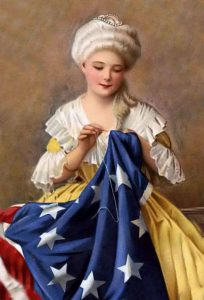
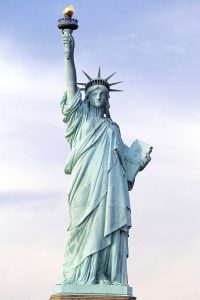
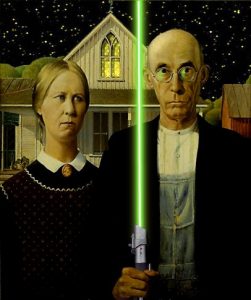
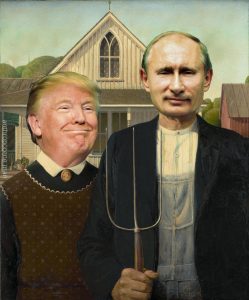
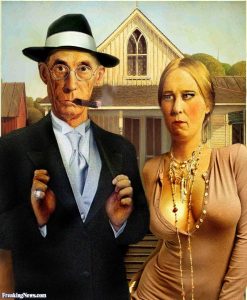

 When thinking about national statues and monuments, my mind flashed back to a picture I saw when I was twelve and nearing the height of my Jonas Brothers obsession. It was a photo of the three brothers at the Christ the Redeemer statue in Rio de Janeiro, Brazil. I knew nothing about the statue at the time but I was struck by how massive and looming it was compared to the size of an average human. I was even more captivated when I came across photos that showed the statue looking out over the city’s vast landscape of skyscrapers, mountains, neighboring islands, and water. Christ the Redeemer may seem to have little in common with the U.S.’s Statue of Liberty (for starters, it’s a him/Him…) but the two iconic structures have one striking similarity: they are what their people want them to be.
When thinking about national statues and monuments, my mind flashed back to a picture I saw when I was twelve and nearing the height of my Jonas Brothers obsession. It was a photo of the three brothers at the Christ the Redeemer statue in Rio de Janeiro, Brazil. I knew nothing about the statue at the time but I was struck by how massive and looming it was compared to the size of an average human. I was even more captivated when I came across photos that showed the statue looking out over the city’s vast landscape of skyscrapers, mountains, neighboring islands, and water. Christ the Redeemer may seem to have little in common with the U.S.’s Statue of Liberty (for starters, it’s a him/Him…) but the two iconic structures have one striking similarity: they are what their people want them to be.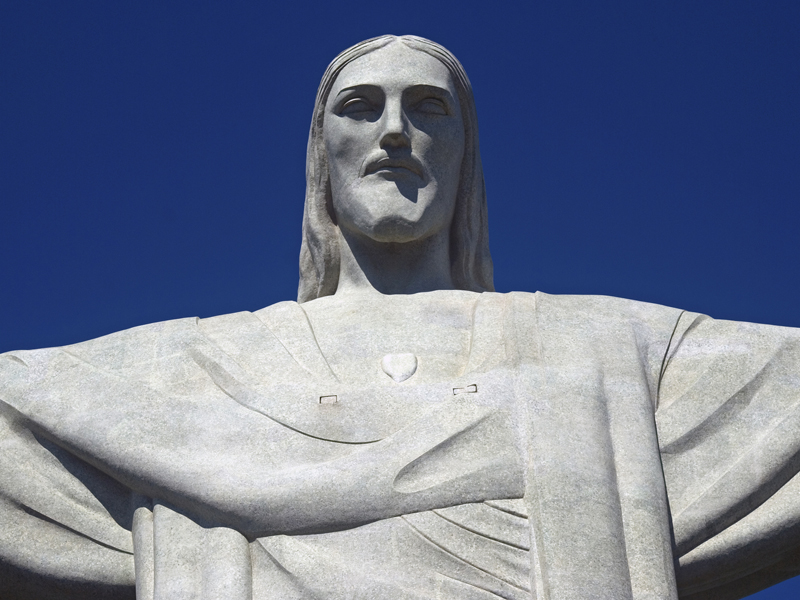 In a similar way, although Christ the Reedemer began as a symbol of Christianity, it is not exclusively so and it has also acquired a greater significance. According to a BBC article, Count Celso, one of the first to be involved with project in its early stages during the 1920s, described the finished statue as “a monument to science, art and religion.” [4] The rector of the chapel that sits inside the base of the statue (the pedestal that elevates its full height to 125 feet) calls it a religious, cultural, and national symbol for Brazil and a means of welcoming all those who pass through Rio, almost like a host. And for a local sorbet vendor, who is also quoted in the article, the statue is a beautiful place with special significance to the community around it. [5] Christ the Reedemer stands as a representation of the Brazilian people’s accepting and warmhearted attitude towards all visitors to Rio and citizens of the world, just like the welcoming and protective qualities that have been attributed to the Statue of Liberty over time as she has greeted new arrivals to America — “From her beacon-hand/Glows world-wide welcome,” as Emma Lazarus’s famous poem states. [6]
In a similar way, although Christ the Reedemer began as a symbol of Christianity, it is not exclusively so and it has also acquired a greater significance. According to a BBC article, Count Celso, one of the first to be involved with project in its early stages during the 1920s, described the finished statue as “a monument to science, art and religion.” [4] The rector of the chapel that sits inside the base of the statue (the pedestal that elevates its full height to 125 feet) calls it a religious, cultural, and national symbol for Brazil and a means of welcoming all those who pass through Rio, almost like a host. And for a local sorbet vendor, who is also quoted in the article, the statue is a beautiful place with special significance to the community around it. [5] Christ the Reedemer stands as a representation of the Brazilian people’s accepting and warmhearted attitude towards all visitors to Rio and citizens of the world, just like the welcoming and protective qualities that have been attributed to the Statue of Liberty over time as she has greeted new arrivals to America — “From her beacon-hand/Glows world-wide welcome,” as Emma Lazarus’s famous poem states. [6]
